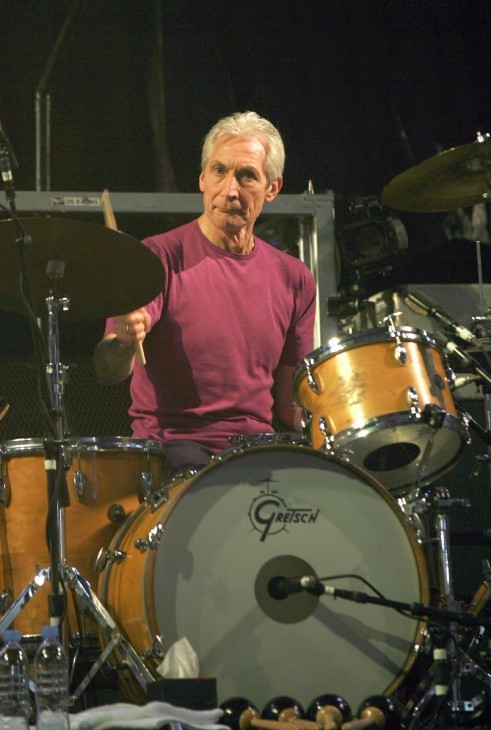
Charlie Watts in 2006. (R. Lawrence / WENN)
The encomiums for Rolling Stones drummer Charlie Watts were broad and heartfelt after his death last month. Words like limber, subtle, stoic and impeccable were tossed about in obituaries and memorials.
But The Guardian, it turns out, offered something more: a technical analysis of his drumming style by two other landmark rock drummers, Stewart Copeland and Max Weinberg. These two know what they’re talking about: Copeland was, with Sting and Andy Summers, a founder of the hit rock trio The Police. Weinberg for decades has been the drummer in Bruce Springsteen‘s E Street Band.
It is enlightening. Here’s Copeland:
Technically, what it is, is that he leads with his right foot on the kick drum, which pushes the band forward. Meanwhile his left hand on the snare, the backbeat, is a little relaxed, a little lazy – and that combination of propulsion and relaxation is the technical definition of what he’s doing. But you can try it yourself, all you want, and it ain’t going to sound like Charlie.
And Weinberg:
Charlie became a proponent – as I am – of a style of rock drumming popularised by the late, great Al Jackson, the famous Stax drummer, where you deliberately play behind the direct backbeat. The way you do that – which is a little technical – is not by focusing on the two and the four beat, but the one and the three. Another example is James Brown’s music, which is heavily focused on landing on the one. It takes a long time to be able to do that.
Good stuff. See our full Charlie Watts biography, or jump right to the article:
Not Just a Drummer – A Genré: Stewart Copeland and Max Weinberg on Charlie Watts
